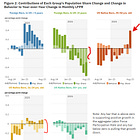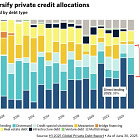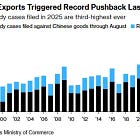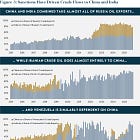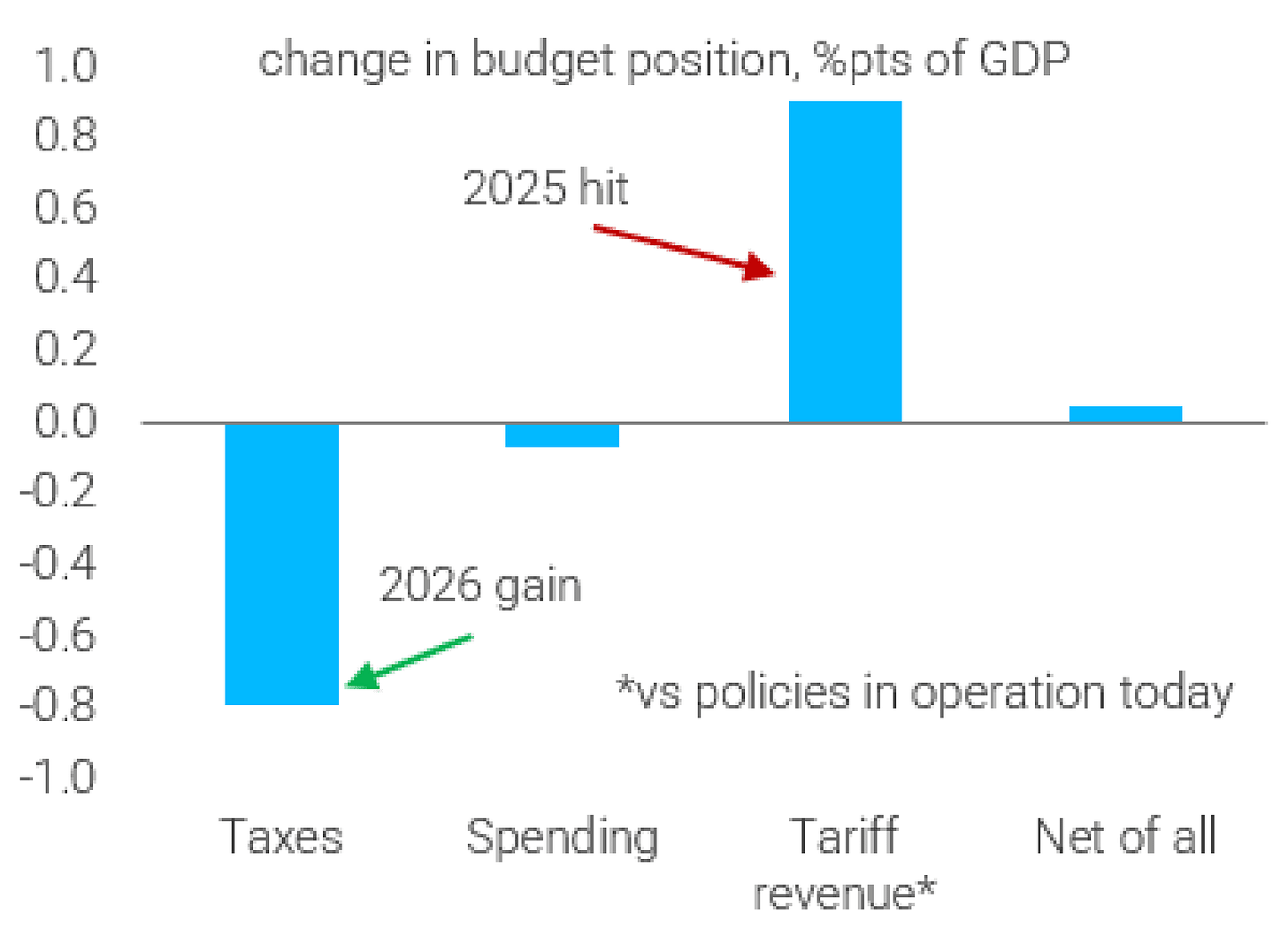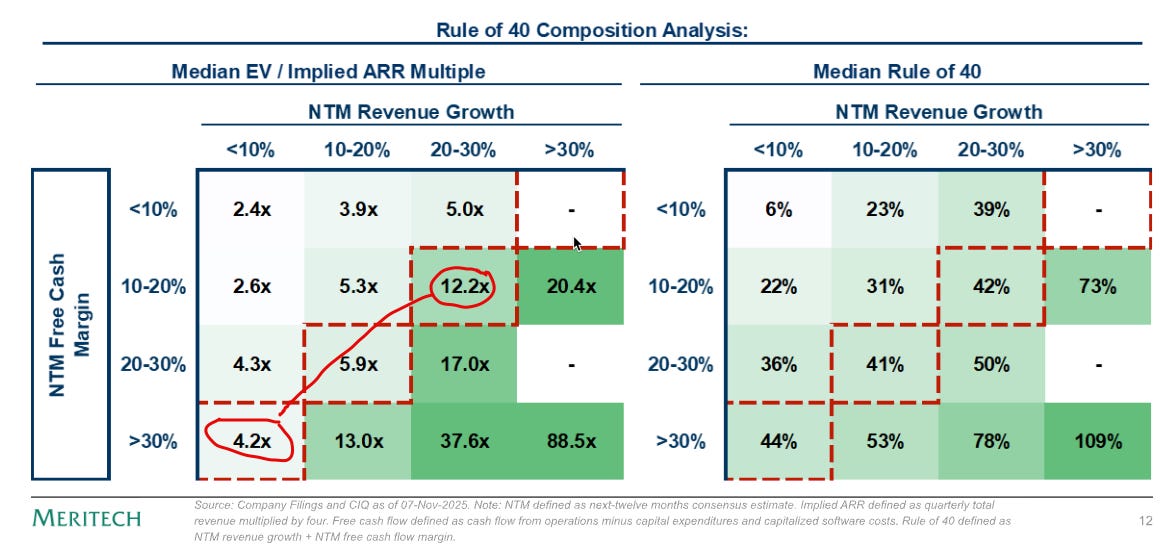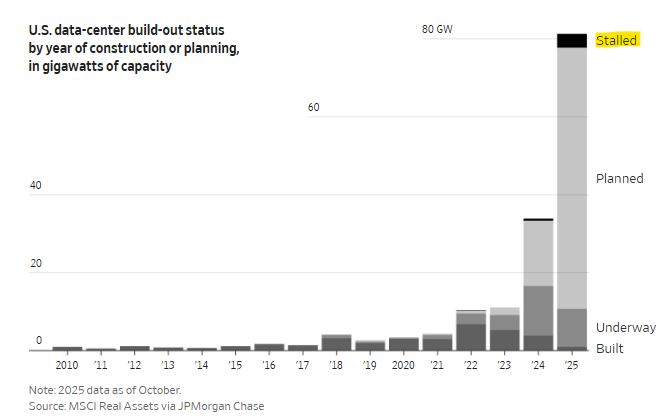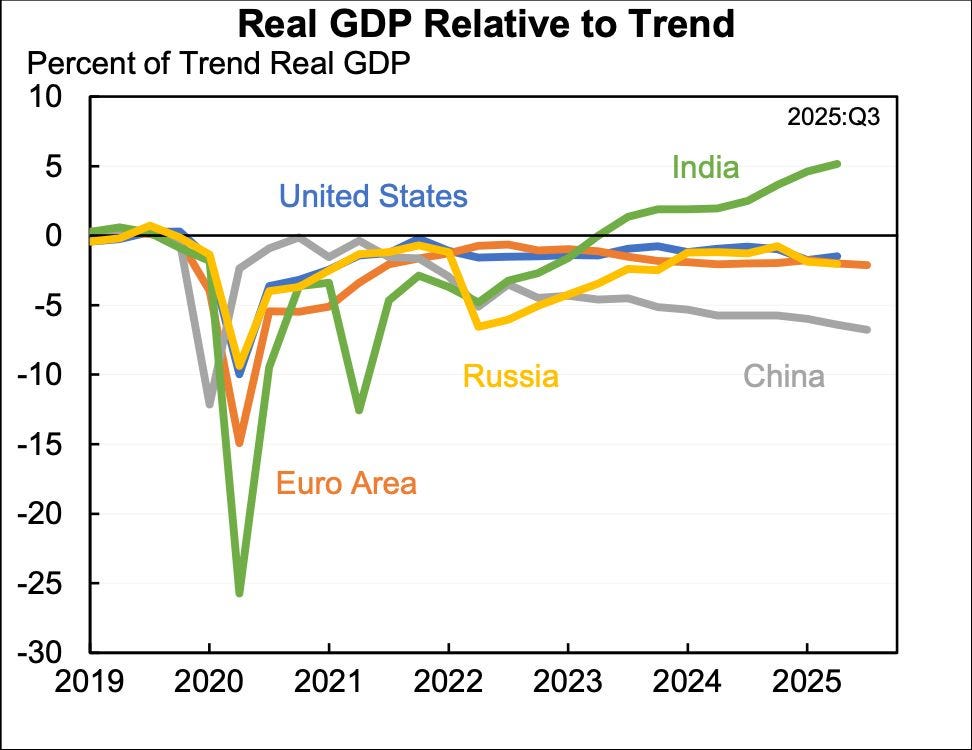5 idea Friday
Five little thoughts for the weekend of diets, stimulus, the future of code, Rules of 40, and Bragawatts
GLP1 life choices
OBBB stimmy inbound?
Indian Code
Some Rule of 40s are better than others
Bragawatts and spending without the data center (not just within)
👉👉👉Reminder to sign up for the Weekly Recap only, if daily emails is too much. Find me on twitter, for more fun. 👋👋👋Random Walk has been piloting some other initiatives and now would like to hear from broader universe of you:
(1) 🛎️ Schedule a time to chat with me. I want to know what would be valuable to you.
(2) 💡 Find out more about Random Walk Idea Dinners. High-Signal Serendipity.Five-thought Friday
Half-baked and under-proofed, ideas and bread, are not the same.
GLP-1 life choices
GLP-1s have become a forgotten story, but the miracle weight-loss impulse-control drugs are still performing miracles.
GLP-1s are also turning people into teetotalers:
Wine and canned-booze spending (and gatorade?) drops ~10% when people start taking GLP-1s.
Normally, I might say something like “akshually, alcohol is an important social lubricant, and people should probably be drinking more,” but in this case, I suspect grocery-store-cocktails-in-a-can is lubricant for endless-scrolling of short-form videos at home, alone on the couch.
Seems like a positive development, in that sense.
ICYMI
An OBBB stimmy inbound?
Remember how if you factor in tariffs, then there’s an argument that the big beautiful bill is actually fiscally responsible?
If you don’t, it went something like this:
Tariff revenue and spending cuts begin to substantially outweigh tax cuts by 2027, substantially reducing the deficit as a share of GDP thereafter.
Three-cheers for fiscal responsibility!
Of course all of this assumes that nothing gets re-traded, that tariffs are steady-state 15% and have no other impact on imports or GDP, which itself can be safely modeled given tax-cuts, and that net-interest on an unknown amount of debt, with uncertain effects on rates, is reasonably calculable.
Front-loaded tax cuts, offset by tariffs and backloaded spending decreases = lower deficit. Hopefully.
Anyways, for reasons that I don’t have time to interrogate, I guess maybe some of the tax savings got bumped to 2026, but the tariff drag certainly kicked-in in 205. And that means, a stimmy for 2026:
Tariffs led to a 0.8% lift to the budget (as a % of GDP) in ‘25, while tax cuts will cause and equal and opposite move in ‘26.
In other words, 2026 fiscal stimulus inbound (maybe). Again, it’s a thought.
Indian code
Random Walk has written previously about the Indian future.
India is actually growing its working age population, and it’s extremely online.1
By some estimates, in this case, Github’s, the future of code is in India too:
India is expected to surpass the US as the world’s leader in developer accounts on Github by 2030.
India already has the second-most developer accounts, but Github thinks the number will nearly triple in ~5 years.
If code-gen is going to obviate the need for Indian IT services, someone should probably inform Indian IT services, so they stop writing so much code.
Some Rule of 40s are considered 3x more precious than others
Nvidia-day came and went, and while GPUs continue to cook, the market sold-off bigly.
Why? Who knows, and it’s probably not one thing. Year-end profit-taking? Maybe. Retail selling off to cover expenses? Maybe. Calling-the-top (like Mr. Theil)? Maybe that too.2
Idk. It doesn’t really change my outlook.
But this isn’t really about that. This is just a neat observation about valuations. Everyone knows by now (hopefully) that the market is priced-to-earnings-growth. If you’re growing profits, the market will pay, the growier and bigger the better.
Now, earnings growth can be driven in a few (non-mutually exclusive ways): you can do more volume and/or improve margins. Often (but not always), there’s some tradeoff between those two, inasmuch as growing more, often costs more, which eats into margins.
For techcos, the Rule of 40 (i.e. rev growth % + fcf% = 40 or more) is traditionally a blended rule-of-thumb for the growth v. profit tradeoff. If you grow revenues very quickly, you can live with lower profitability. If you’re very profitable, you can grow topline a little slower, but the idea is that growth+margins combo should add up to 40, and then you’re all good (hence the Rule of 40).
But not all Rule of 40 Cos are valued the same. The composition of your 40 matters a lot.
Consider:
If you earn your 40 with
10-20% margins + 20-30% revenue growth, you win a 12.2x multiple; but . . .
30%+ margins with sub-10% revenue growth, gets you a modest 4.2x multiple
It’s not obvious that high-growth revenue with lower margins should be valued that much higher than slower-growth revenue with fatter margins. Just in the simplest iteration of the math, $1 of new revenue at 30% gets 30 cents of profit, and $3 of new revenue at 10% gets 30 cents of profit. 30 cents of new profit in both cases. Same same.
Heck, if the lower-growth company just grows without much incremental investment, then it’s just a serial compounder, and that’s pretty valuable. If the high-growth company needs to keep spending to achieve that 30%, then that’s a pretty high-effort endeavor to keep up.
And yet, the high-growth revenues are valued ~3x higher than their slower-growth Rule of 40 cousins.
Of course, the median multiple obscures any of that company-by-company nuance, and in the case of techcos, presumably the assumption is that margins will continue to improve at greater scale, so the incremental value of that (for now) lower-profit revenue is more valuable because its faster growth, hastens the even more impressive profitability.
Anyways, it’s a thought.
The AI power bottleneck
Random Walk is not alone in positing that energy will be a throttle on AI sooner than demand.
Or rather, the real cost of AI hasn’t been fully internalized yet, because the real cost of the power consumption is still mostly a tomorrow problem. At some point, any and either of the taxpayer, the consumer, or the hyperscalers, is going to have to pay for all that net-new electricity demand, and price elasticity being what it is, well, you get the idea.
Anyways, KKR’s global head of digital infrastructure recently coined the term “bragawatts” to describe all the big headline-grabbing deal announcements that describe an amount of computation to be delivered that does not yet exist with money that no one has. Most importantly, and KKR is talking its book here, bragawatts neglect the core limiting constraint on all of this, i.e. the actual, real live watts.
AI’s physical footprint — data centres, power generation and transmission, cooling, fibre networks, etc — fits the same pattern as rail, electricity and telecom. Undoubtedly, there will be overshoots and shake‑outs. And some losers. Just as in an economic boom, not every lender will make prudent credit decisions.
The question though isn’t whether AI infrastructure is “needed”, but which infrastructure, including where, and under what constraints, will matter most . . .
. . . investors and policymakers should look past the hype and focus on the questions that matter — can power supply scale to demand? Where will permits, grid capacity and land actually unlock gigawatts? Who bears the capital cost of ensuring resiliency of systems as AI workloads surge? Data centre headlines or “bragawatts” aren’t the point; delivery is. Not all picks-and-shovels strategies will be equally effective.
Ignore the bragawatts, and focus on the actual delivery of electricity. Sounds wise.
Anyways, this little graphic from the WSJ caught my eye:
There is effectively “infinite” money available right now to build out new data centers, says Jim Schneider, a senior research analyst at Goldman Sachs. All this investment has translated into record spending on the stuff that goes into data centers—aka “AI supercomputers”—all those chips, servers, HVAC systems, transformers, gas turbines, power lines and power plants.
There are absolute, physical limits to how quickly all of that can be delivered. As a result, some projects are already being delayed.
“Infinite money” on what goes into the data centers, but powering up those data centers, is a different question. Stalled projects are beginning to accumulate.
Previously, on Random Walk
Private Credit and Insurance, two peas in a pod (reprise), and a chart dump on default rates
five charts on the rise of private credit in life insurance
Energy in 1776
It’s July 4th, so Happy Birthday America, and we’re going to keep it light and only semi-topical.
Random Walk is an idea company dedicated to the discovery of idea alpha. Find differentiated data, perspectives and people, and keep your information mix lively. A foolish consistency is the hobgoblin of small minds. Fight the Great Idea Stagnation. Join Random Walk. Follow me on twitter. Follow me on substack:
Big shock to no one here, but India is also growing above-trend:
Adding more working age people will do that for you.
Fwiw, earnings season was a bang-up success for the RW portfolio, which is not investment advice, and totally unreliable for anything:
LQDT 0.00%↑ crushed
AROC 0.00%↑ crushed
ALL 0.00%↑ crushed
NVDA 0.00%↑ and GOOGL 0.00%↑ crushed
AFRM 0.00%↑ crushed (although I trimmed a bunch at the top)
PCOR 0.00%↑ crushed
NOW 0.00%↑, SHOP 0.00%↑ and UNH 0.00%↑ more or less as-expected (but I’m losing interesting in NOW 0.00%↑). META 0.00%↑ was also as-expected, but market puked on the capex. Oh well. Ima add some more.
The only one left to go is KR 0.00%↑.




